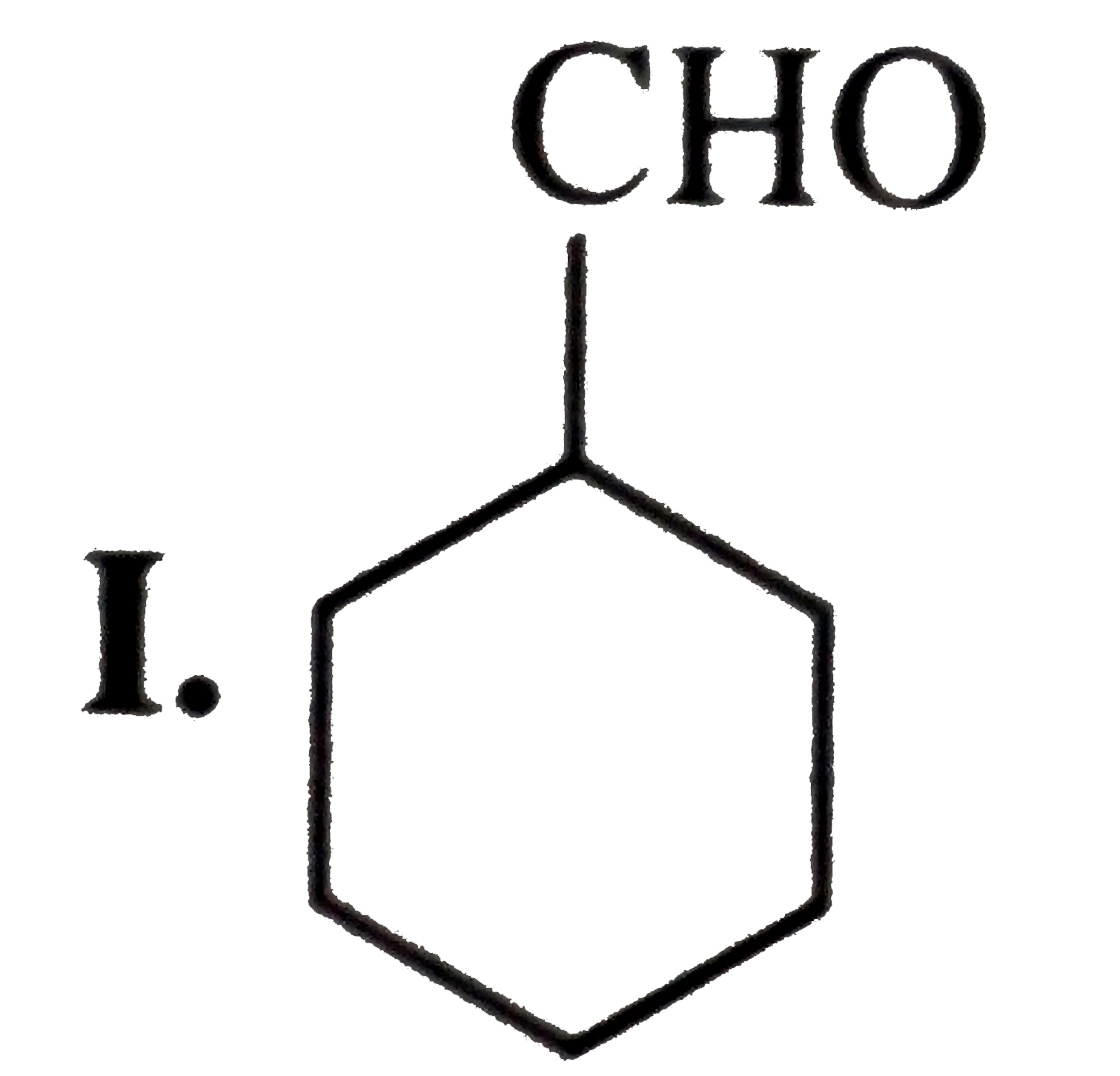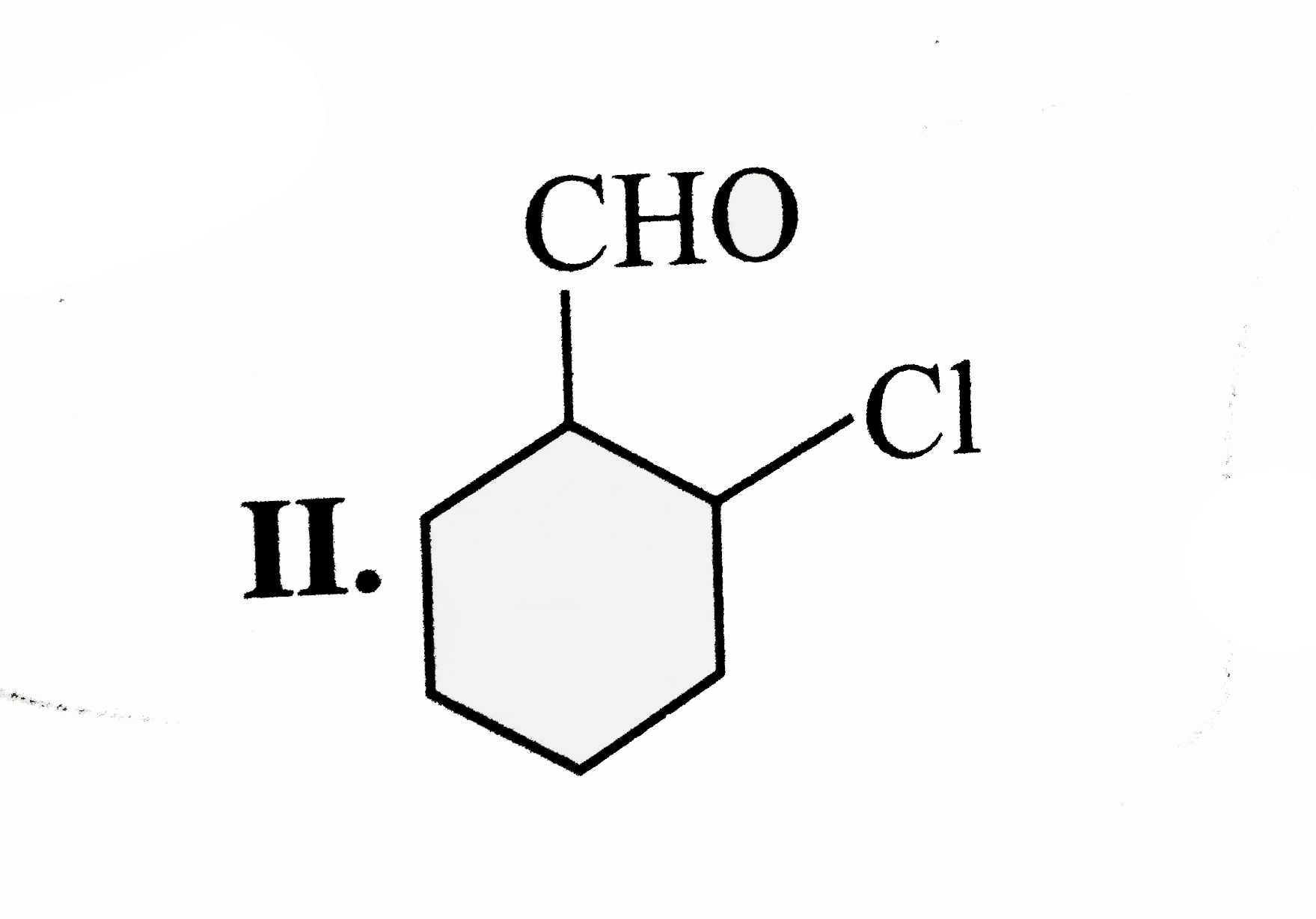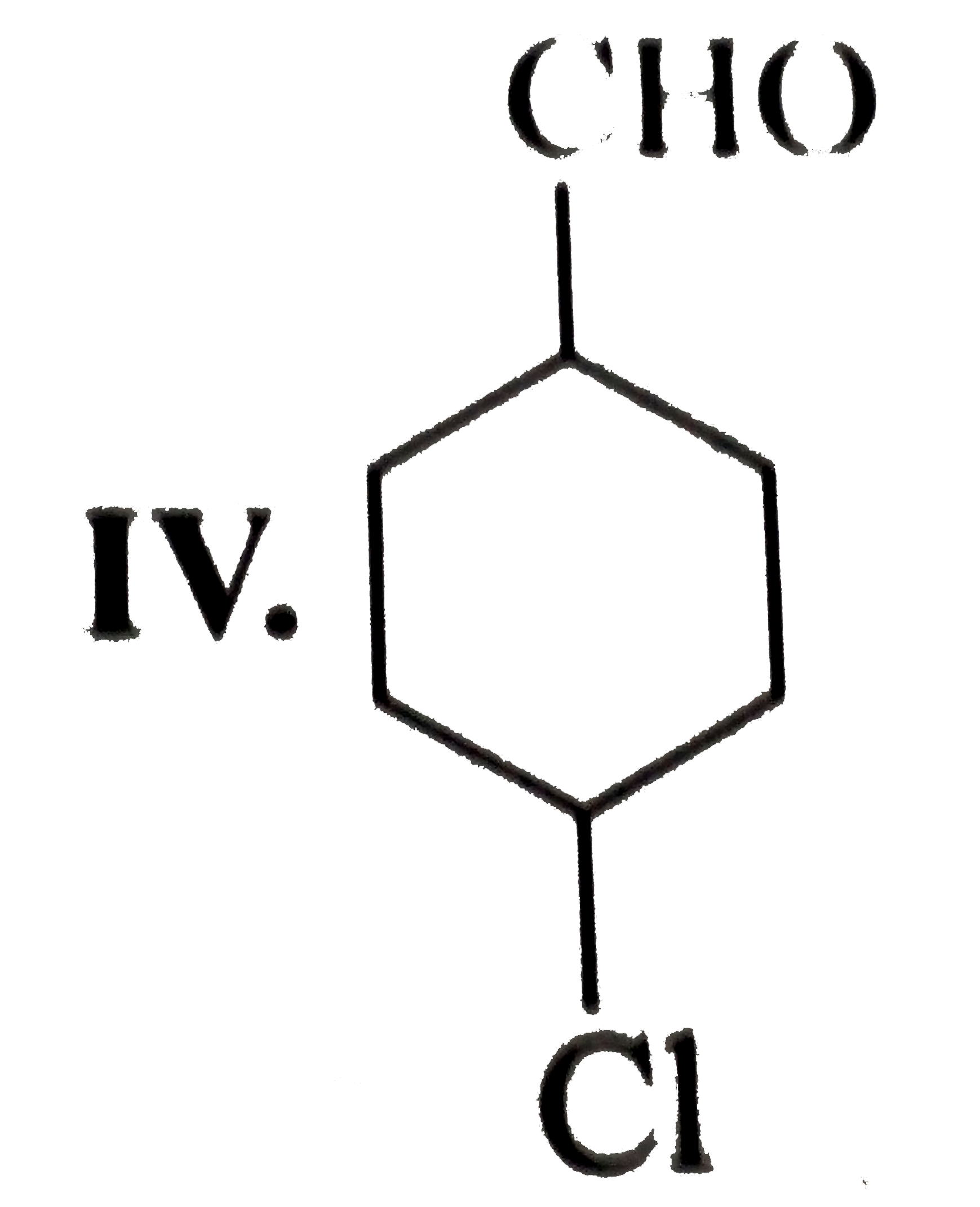Arrange in order of decresing trend towards SE reactions,
ChlorobenzenBenzeneAnilinium chlorideTolueneIIIIIIIV
I>I>III>IV
III>I>II>IV
IV>II>I>III
I>II>III>IV
The correct Answer is:C
To arrange the compounds in order of decreasing trend towards electrophilic substitution (SE) reactions, we need to analyze the nature of the substituents on the benzene ring for each compound.
1. Identify the Compounds: The compounds given are:
- I: Chlorobenzene
- II: Benzene
- III: Anilinium chloride
- IV: Toluene
2. Understand Electrophilic Substitution (SE):
- Electrophilic substitution reactions occur when an electrophile attacks the aromatic ring and substitutes one of the hydrogen atoms.
- The reactivity towards SE is influenced by the nature of the substituent on the benzene ring:
- Electron-donating groups (EDGs) increase the electron density on the ring, making it more reactive towards electrophiles.
- Electron-withdrawing groups (EWGs) decrease the electron density, making the ring less reactive.
3. Analyze Each Compound:
- Chlorobenzene (I): Chlorine is an electron-withdrawing group due to its -I effect (inductive effect) but has a +M effect (mesomeric effect). However, the -I effect is stronger, making chlorobenzene a deactivator for SE reactions.
- Benzene (II): Benzene has no substituents, so it is neutral in terms of reactivity. It has a moderate reactivity towards SE.
- Anilinium Chloride (III): Anilinium chloride has a positively charged nitrogen (NH3+), which strongly withdraws electrons from the ring, making it a very poor candidate for SE reactions.
- Toluene (IV): Toluene has a methyl group (-CH3), which is an electron-donating group due to hyperconjugation and +I effect. This increases the reactivity towards SE.
4. Order of Reactivity:
- Most Reactive: Toluene (IV) - due to the electron-donating methyl group.
- Next: Benzene (II) - neutral, moderate reactivity.
- Third: Chlorobenzene (I) - electron-withdrawing chlorine reduces reactivity.
- Least Reactive: Anilinium chloride (III) - strong electron-withdrawing effect due to the positively charged nitrogen.
5. Final Arrangement:
The order of decreasing trend towards SE reactions is:
- IV: Toluene > II: Benzene > I: Chlorobenzene > III: Anilinium chloride
Answer:
The order of decreasing trend towards SE reactions is:
Toluene > Benzene > Chlorobenzene > Anilinium Chloride (IV > II > I > III)
---
- I: Chlorobenzene
- II: Benzene
- III: Anilinium chloride
- IV: Toluene
- Electrophilic substitution reactions occur when an electrophile attacks the aromatic ring and substitutes one of the hydrogen atoms.
- The reactivity towards SE is influenced by the nature of the substituent on the benzene ring:
- Electron-donating groups (EDGs) increase the electron density on the ring, making it more reactive towards electrophiles.
- Electron-withdrawing groups (EWGs) decrease the electron density, making the ring less reactive.
- Chlorobenzene (I): Chlorine is an electron-withdrawing group due to its -I effect (inductive effect) but has a +M effect (mesomeric effect). However, the -I effect is stronger, making chlorobenzene a deactivator for SE reactions.
- Benzene (II): Benzene has no substituents, so it is neutral in terms of reactivity. It has a moderate reactivity towards SE.
- Anilinium Chloride (III): Anilinium chloride has a positively charged nitrogen (NH3+), which strongly withdraws electrons from the ring, making it a very poor candidate for SE reactions.
- Toluene (IV): Toluene has a methyl group (-CH3), which is an electron-donating group due to hyperconjugation and +I effect. This increases the reactivity towards SE.
- Most Reactive: Toluene (IV) - due to the electron-donating methyl group.
- Next: Benzene (II) - neutral, moderate reactivity.
- Third: Chlorobenzene (I) - electron-withdrawing chlorine reduces reactivity.
- Least Reactive: Anilinium chloride (III) - strong electron-withdrawing effect due to the positively charged nitrogen.
The order of decreasing trend towards SE reactions is:
- IV: Toluene > II: Benzene > I: Chlorobenzene > III: Anilinium chloride
The order of decreasing trend towards SE reactions is:
Toluene > Benzene > Chlorobenzene > Anilinium Chloride (IV > II > I > III)
Topper's Solved these Questions
- ALKENE, ALKANE & ALKYNE BOOK - ALLENCHAPTER - ALKENE, ALKANE & ALKYNE EXERCISE - EXERCISE-5[A]
68 Videos
- ALKENE, ALKANE & ALKYNE BOOK - ALLENCHAPTER - ALKENE, ALKANE & ALKYNE EXERCISE - EXERCISE-5[B]
165 Videos
- ALKENE, ALKANE & ALKYNE BOOK - ALLENCHAPTER - ALKENE, ALKANE & ALKYNE EXERCISE - EXERCISE-4[B]
47 Videos
- AIIMS 2019BOOK - ALLENCHAPTER - AIIMS 2019EXERCISE - CHEMISTRY
40 Videos
- ALKYL AND ARYL HALIDEBOOK - ALLENCHAPTER - ALKYL AND ARYL HALIDEEXERCISE - EXERCISE-05 (B)
35 Videos
Similar Questions
Knowledge Check
Arrange the following three chlorides in decreasing order towards SN1 reactivity.
 A1 gt 2 gt 3B2 gt 3 gt 1C2 gt 1 gt 3D3 gt 2 gt 1
A1 gt 2 gt 3B2 gt 3 gt 1C2 gt 1 gt 3D3 gt 2 gt 1Arrange the following alkyl chlorides in order of decreasing reactivity in an SN1 reaction:
(I) isopropyl bromide (II) propyl bromide br> (III) tert-butyl bromide (IV) methyl bromideA(III)>(I)>(II)>(IV)B(I)>(III)>(IV)>(II)C(IV)>(III)>(II)>(I)D(I)>(II)>(III)>(IV)
Decreasing order of boiling point of I to IV follow
MethylformateEthylformateIso-propylformaten-PropylformateIIIIIIIV
View SolutionGive the decreasing order of the relative reactivity towards SE reaction of the following compounds.
a. I. Benzene, II. Phenol, III. Aniline, IV. Chlorobenzene
View SolutionArrange the following in decreasing order of reactivity towards electrophilic substitution reaction
Aniline (I) , Acetanilide (II)
phenol (III) , Anilinium chloride (IV)
View SolutionArrange the following in the increasing order of ease of nucleophilic substitution reaction
Chlorobenzene (I) 2,4,6 trinitrochlorobenzene (II) 2,4 dinitro- chlorobenzene (III) and 4- nitrochlorobenzene (IV)
View SolutionArrange the following compound in order of increasing dipole moment :
(I) 1, 3, 5-Trichloro benzene
(II) 1, 2, 4-Trichloro benzene
(III) 1, 2, 3, 4-Tetrachloro benzene
(IV) P-dichloro benzene
View SolutionArrange the following compounds in order of increasing dipole moment, Ethylbenzene (I), m-dichlorobenzene (II), o-dichlorobenzene (III), p-dichlorobenzene (IV)
View Solution


 II.
II. 
 IV.
IV. 